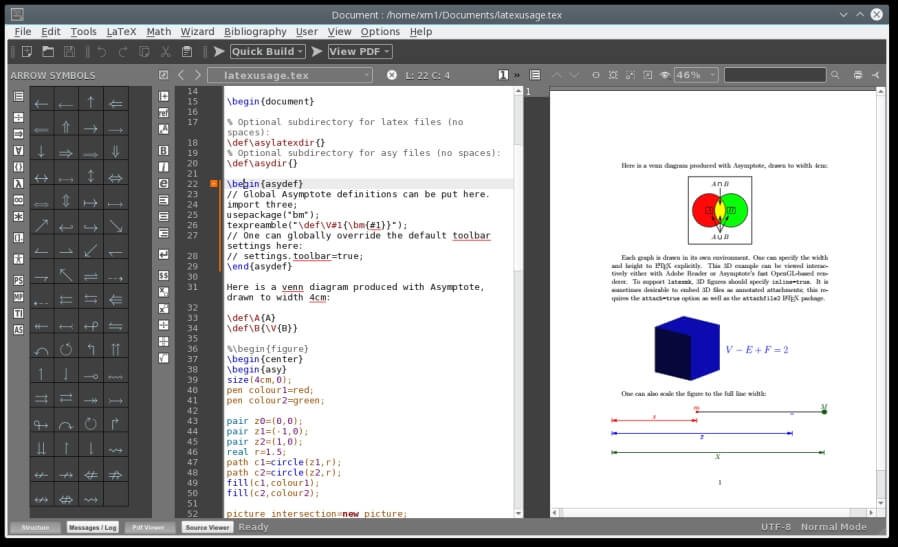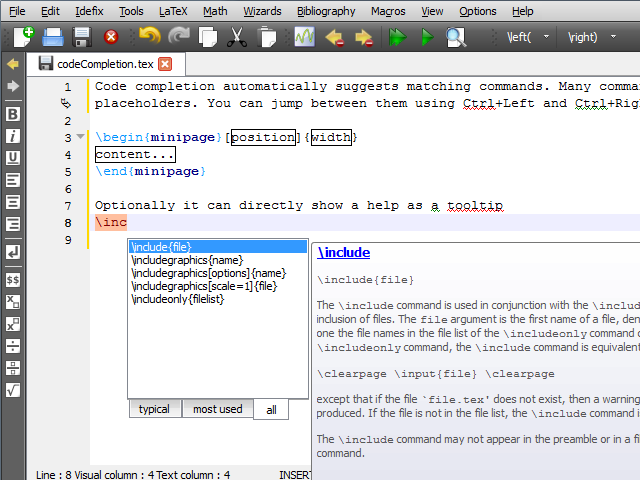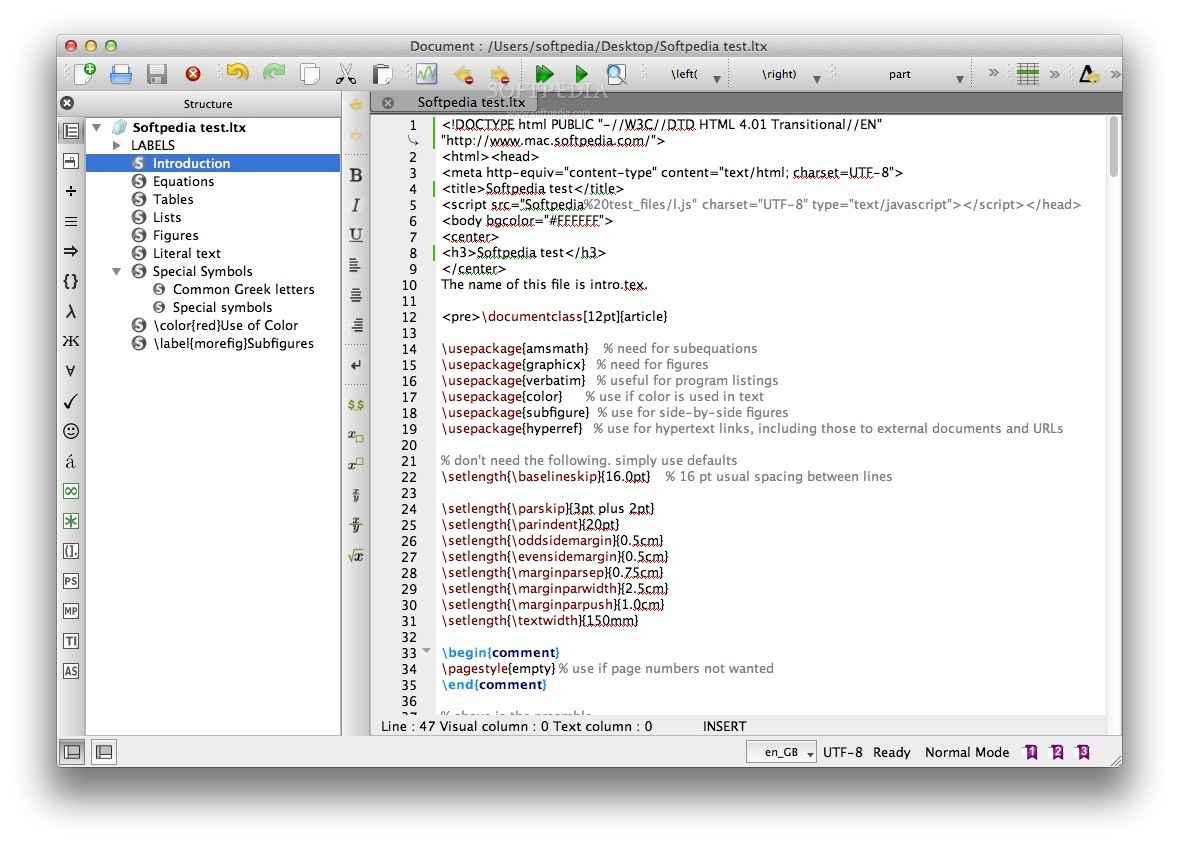

This is triggered by clicking the spanner-symbol.Alternatively a command can be directly selected through the file system.ġ.3.1 Advanced configuration of the build system The user commands can be activatedeither by short cut (alt+shift+F%n) or by the tools menu (Tools/User).User commands can either consist of a combination of known commands by selecting them from a list of available commands. The display name will be shown in the tools menu. In advanced mode, you can reference it using txs:///". The command id has to beunique and must not contain spaces. Each user command has a name with a pattern :, e.g. User commands can be defined here by "adding" them. You can always restore the original settings using the revert button to the right. The section Forward/Inverse search gives some example commands for common viewers.

Location of the settings file (texstudio.ini)
#Texstudio view pdf portable
Location of the TeXstudio executable (useful for portable settings)

? followed by further characters See the instruction at the bottom of the configuration dialog. % filename of the root document for of current document without current line number You can use a number of special characters / character sequences to address the context of the current document. To change a command, just click onthe button at the end of the corresponding line and select the command in the file browser : TeXstudio will automatically adapt the syntax of the command. The default settings should work with the recent and standard LaTeX distributions, but you could have to modify them ("Configure TeXstudio" -> "Commands"). The commands section defines there location and arguments. LaTeX comes with a number of command line tools to compile and manipulate LaTeX documents. "Folding" toggles the editors code-folding capability (hide sections of the text).The selection box "Indentation mode" lets you select, wether indented lines are followed by lines of the same indentation after pressing Enter or letting TeXstudio do automatic indentation.ġ.2 Configuring the latex related commands (andthen you also have to disable the auto detection) \usepackage, if you use utf-8).TeXstudio can auto detect utf-8 and latin1 encoded files, but if you use a different encoding in your existing documents you have to specify it in the configuration dialog before opening them. Don't forget to set the same encoding in the preamble of your documents.

1.1 Configuring the editor You may change the default encoding for new files ("Configure TeXstudio" -> "Editor" -> "Editor Font Encoding") if you don't want utf8 as encoding. More advanced or less often used options are only visible if you toggle "Show advanced options" in the lower left corner. Note that there are two levels of detail.
#Texstudio view pdf mac os
Configuring TeXstudio Before using TeXstudio, you should configure the editor and latex related commands via the "Configure TeXstudio" command in the "Options" menu ("Preferences" under Mac OS X). Other features 4.1 About documents separated in several files 4.2 Syntax Check 4.3 Bibliography 4.4 SVN Support 4.5 Personal macros 4.6 Pstricks support 4.7 Metapost support 4.8 The "Convert to Html" command 4.9 "Forward/Inverse search" with TeXstudio 4.10 Advanced header usage 4.11 Synopsis of the TeXstudio command 4.12 Keyboard shortcuts 4.13 Description of the cwl format 4.14 Using table templates 4.15 Writing your own language definitions Changelog 1. Compiling a document 3.1 Compiling 3.2 The log files 4. Editing a TeX document 2.1 Usual commands 2.2 Creating a new document 2.2.1 Setting the preamble of a TeX document 2.2.2 Using Templates to start a new document 2.3 Structure of a document 2.4 Browsing your document 2.5 Formatting your text 2.6 Spacings 2.7 Inserting a list 2.8 Inserting a table 2.8.1 Manipulating a table 2.9 Inserting a "tabbing" environment 2.10 Inserting a picture 2.10.1 Inserting a picture using a "wizard" 2.11 Cross References and notes 2.12 Inserting math formulae 2.13 Auto completion 2.14 Thesaurus 2.15 Special Commands 3. Configuring TeXstudio 1.1 Configuring the editor 1.2 Configuring the latex related commands 1.3 Configuring the build system 1.4 Configuring some general issues 1.4.1 Configuring the spell checker 1.4.2 Configuring the thesaurus 1.4.3 Configuring the latex syntax checker 1.4.4 Configuring the grammar checker 1.5 Configuring the autocompletion 1.6 Configuring shortcuts 1.7 Configuring the Latex/Math-Menu 1.8 Configuring the Custom Toolbar 1.9 Configuring SVN support 2.


 0 kommentar(er)
0 kommentar(er)
